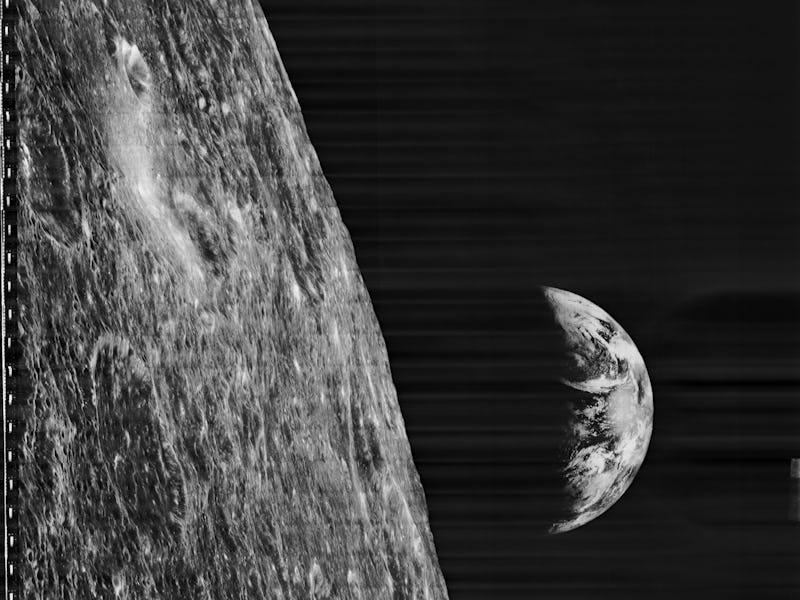Scientists debunk leading theory of why the Moon has a magnetic crust
Billions of years ago, the Moon's crust magnetized. Now, scientists think they know why.

More than 50 years ago, NASA landed humans on the Moon — and we brought a piece of it back with us to Earth.
That 22 kilograms of rock and dust collected by the Apollo astronauts transformed our understanding of our closest cosmic neighbor. One major finding from the Apollo samples showed the Moon generated a magnetic field billions of years ago, one that was likely even stronger than the Earth's magnetic field today.
But the rock didn't reveal why the Moon's crust magnetized. Now, a study published last week in the jorunal Science Advances debunks one of the most popular theories. In doing so, it narrows down the true reason behind the lunar curst's magnetism.
The Apollo samples reveal the Moon had a strong magnetic field at least 4.2 billion years ago (the Earth formed around 4.5 billion years ago). Over time, it became progressively weaker, and now it is inactive.
There are two leading theories as to how the Moon's crust became magnetized.
The first is that a lunar dynamo, or a molten core at the center of the Moon, may have powered the Moon's magnetic field. The second, older theory suggests the Moon's magnetic field was generated by impacts from meteorites.
Several decades after they occurred, NASA's Apollo missions are still informing our understanding of the Moon's surface today.
To test these theories, the scientists behind the new study ran simulations to estimate of the amount of vapor that would form as large meteorites crashed on the lunar surface approximately 4 billion years ago.
“When we look at the Moon with the naked eye, we can see these large craters caused by ancient meteoroid impacts. They are now filled with volcanic maria, or seas, causing them to look darker on the surface,” Katarina Miljkovic, a researcher at the Curtin Space Science and Technology Centre at Curtin University, Australia, said in a statement. “During these impact events, the meteoroids hit the Moon at a very high speed, causing displacement, melting, and vaporization of the lunar crust."
The researchers then calculated the mass and thermal energy of the vapor emitted during these impacts. They found the plasmas caused by the meteorite impacts interacted much more weakly with the Moon than would be expected from the samples.
By 'debunking' this theory, the researchers conclude that the core dynamo theory must be the only plausible explanation for the Moon's magnetism. But it is important to note that this study does not explicitly test this hypothesis.
“Basically, we made a much more inclusive, high fidelity and high-resolution investigation that led to debunking of the older hypothesis," Miljkovic said.
The Moon is not the only small celestial object with a magnetic field. Mercury and other small planetary bodies, as well as some meteorites, are also magnetized. The recent study suggests that perhaps a similar core dynamo is also at play at the center of those objects, although more work is needed before these conclusions can be made for certain.
Abstract: The crusts of the Moon, Mercury, and many meteorite parent bodies are magnetized. Although the magnetizing field is commonly attributed to that of an ancient core dynamo, a longstanding hypothesized alternative is amplification of the interplanetary magnetic field and induced crustal field by plasmas generated by meteoroid impacts. Here, we use magnetohydrodynamic and impact simulations and analytic relationships to demonstrate that although impact plasmas can transiently enhance the field inside the Moon, the resulting fields are at least three orders of magnitude too weak to explain lunar crustal magnetic anomalies. This leaves a core dynamo as the only plausible source of most magnetization on the Moon.